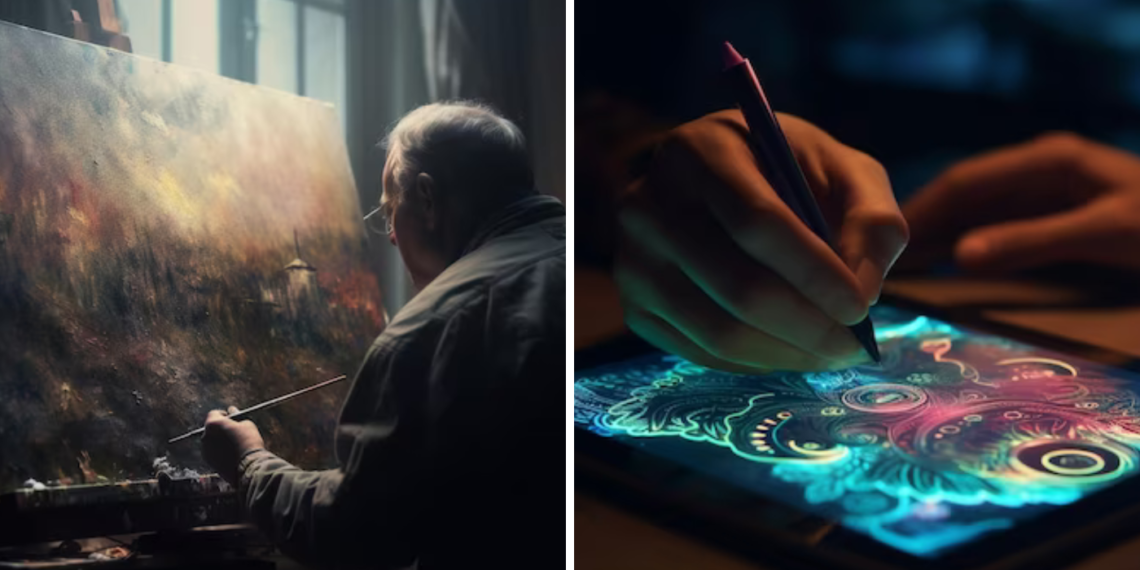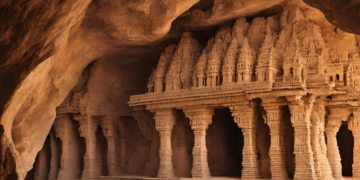In a world where creativity knows no bounds, art has continuously evolved, captivating minds and pushing boundaries. From cave paintings to Renaissance masterpieces, art has always been an expression of human imagination and emotion. But in recent years, a new wave of empowered upcoming artists has emerged, reshaping the art world as we know it. This evolution has been fueled by a combination of technological advancements, cultural shifts, and a growing demand for authentic and unique experiences.
These artists are breaking free from traditional norms, blending different mediums, and experimenting with innovative techniques. They are challenging the status quo, using their art as a platform to advocate for social change and express their personal narratives. In this article, we will explore the fascinating journey of art’s evolution and the inspiring stories of these rising artists who are redefining what it means to be creative in the digital age. Get ready to be inspired and amazed by the boundless possibilities of artistic expression.
The Evolution of Art Throughout History

Art has evolved as a testament to humanity’s creative journey across history. From prehistoric cave paintings depicting daily life to the grandeur of ancient civilizations’ sculptures, art served as a medium of expression and communication. The Renaissance marked a pivotal shift, celebrating humanism and perspective, leading to realistic portrayals in painting and sculpture. The Romantic and Impressionist movements introduced emotion and subjectivity, breaking from traditional norms.
The 20th century witnessed radical experimentation with Cubism, Surrealism, and Abstract Expressionism, reflecting the tumultuous times. Modern technology, notably photography and film, altered artistic perspectives. Postmodernism challenged notions of originality and artistic hierarchy, embracing diverse mediums and questioning established narratives.
Today, technology shapes contemporary art, with digital art and virtual reality pushing boundaries. Art has also become a voice for social and political discourse, addressing issues like identity, inequality, and climate change. The evolution of art is a testament to human imagination, reflecting societal changes, and challenging conventions, ultimately uniting the past and present in a timeless exploration of creativity.
The Rise of Empowered Upcoming Artists
In the ever-evolving realm of art, a profound transformation is underway – a rising tide of empowered upcoming artists that is reshaping the creative landscape. Fueled by technological advancements and unprecedented access to global audiences, these emerging talents are breaking free from traditional constraints, forging their own paths, and asserting their unique visions.
Empowerment in this context extends beyond creative freedom; it encapsulates the ability to navigate the digital realm with finesse, leveraging social media platforms as virtual galleries to showcase their work to an expansive audience. Through Instagram, TikTok, and other channels, these artists are sidestepping conventional gatekeepers, directly engaging with admirers and potential patrons, and establishing their artistic identities on their terms.
This empowerment is also echoed in the diversification of artistic narratives. Upcoming artists are fearlessly addressing pressing social issues, sharing personal stories, and challenging established norms through their creations. Their unfiltered expressions resonate authentically with audiences, fostering deeper connections and fostering conversations that span the globe.
As these artists embrace their power and autonomy, they are redefining success. Collaboration, community-building, and a reimagining of the commercial art world are becoming central tenets of their journeys. With determination, resourcefulness, and an unrelenting spirit, empowered upcoming artists are not only shaping the future of art but also embodying a broader cultural shift toward inclusivity, innovation, and unapologetic self-expression.
The Impact of Technology on Art
The impact of technology on art has been revolutionary, reshaping the artistic landscape in profound ways. In the digital age, artists have been empowered by an array of technological tools and platforms that have expanded the horizons of creativity. The advent of digital mediums has allowed artists to explore new forms of expression, blurring the lines between traditional and digital art. Interactive installations, virtual reality experiences, and algorithm-generated artworks have pushed the boundaries of artistic innovation.
Moreover, technology has democratised access to art, enabling artists to share their work with a global audience through social media and online galleries. This accessibility has dismantled traditional barriers to entry, allowing emerging talents to gain recognition and connect directly with art enthusiasts and collectors. The instantaneous nature of the digital realm has also transformed artistic processes, enabling artists to experiment, iterate, and collaborate in real time.
However, alongside these opportunities, technology has raised questions about authenticity, copyright, and the preservation of digital artworks. As the art world grapples with these challenges, it is clear that technology’s impact on art is an ongoing evolution that continues to reshape artistic creation, distribution, and consumption in ways that were once unimaginable.
How Social Media has Revolutionised the Art Industry

Social media has sparked an art industry revolution, fundamentally altering how art is produced, displayed, and engaged with. Platforms like Instagram and TikTok have evolved into virtual galleries, dissolving geographical boundaries and granting artists global reach. This direct connectivity empowers artists to narrate their stories, fostering a sense of community and interactivity that transcends physical limitations. The viral potential of social media can catapult unknown artists into instant fame, redefining artistic success.
Furthermore, social media has democratised art consumption, enabling users to actively participate, discuss, and share interpretations. Crowdsourcing and crowdfunding have emerged as novel support mechanisms, redefining patronage. This transformation transcends mere aesthetics, permeating every facet of the art world. In sum, social media’s impact on the art industry is a paradigm shift, redefining accessibility, engagement, and the very essence of artistic expression.
The Challenges Faced by Upcoming Artists in The Digital age
In the digital era, upcoming artists grapple with a range of intricate challenges that significantly influence their artistic endeavors. The vastness of the online landscape introduces hurdles of visibility and recognition, as the sheer volume of content makes it difficult for emerging voices to break through. Striking a balance between originality and navigating copyright complexities becomes more intricate in the digital realm where resources are easily accessible and boundaries are blurred.
Moreover, technical skills have expanded to encompass digital proficiency beyond traditional artistic talents, necessitating mastery of intricate software and platforms. Authenticity takes on new dimensions, requiring artists to curate their online personas while staying aligned with their creative essence. Adapting to swiftly changing trends and technologies poses an ongoing challenge for staying relevant in a rapidly evolving digital landscape. Additionally, the digital space exposes artists to both constructive critique and unwarranted negativity, impacting their self-assurance and emotional well-being.
Yet, within these complexities lie opportunities for innovation and growth. Emerging artists have the chance to explore unique monetization avenues, directly engage with audiences, and forge distinct artistic identities in the digital domain. As they navigate these challenges, they redefine the intersection of art and technology, harnessing the digital era’s potential while preserving their artistic authenticity and vision.
The Future of Art and the Empowerment of Artists
The future of art holds the promise of unprecedented empowerment for artists. Technological advancements will provide new mediums and tools for creative expression, while digital platforms will democratise access to global audiences. Artists will harness data, AI, and virtual reality to redefine artistic boundaries. Empowered by these innovations, artists will play a pivotal role in shaping cultural conversations, driving social change, and reimagining the very essence of art in a digitally interconnected world. The future envisions artists as influential visionaries, embracing technology to amplify their voices and leave an indelible mark on society.
Conclusion
The fusion of history, technology, and youthful ingenuity is ushering in a new era of artistry that defies boundaries and expectations. As we reflect on the evolution of art, the impact of technology, and the rise of empowered young artists, it becomes evident that creativity is an ever-evolving force that will continue to shape and redefine the artistic landscape for generations to come.




